#Horse Breed: Brumby
Link
Skills: 1858.33
Breed: Brumby
Age: 32 years
Species: Riding unicorn
Height: 15.1 hands
Gender: female
Weight: 935 pounds
Coat: Black
Date of Birth: 2017-04-24
Producer: White_Knight
0 notes
Note
May I suggest a brumby please? I’m in the process of adopting one and I’d love to see them drawn in your style 😍
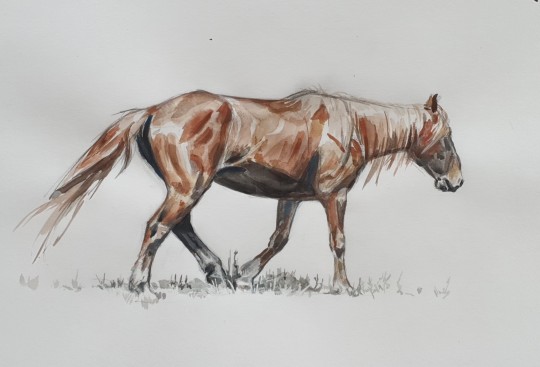
Cool! I hope it all goes well for you. I really enjoy painting different kinds of wild horses since they tend to have really nice physiques so this one was really fun to do.
#I lived in NZ for a while but never managed to make it over to Australia#so I have quite a lot of curiosity about Australia in general as well as brumbies.#brumbies#brumby#art#artist#artists on tumblr#animal art#horse#horses#equineart#horseart#gouache art#gouache study#gouache painting#gouache#wild horse#dharmaart#horse breeds
70 notes
·
View notes
Note
You know those misconceptions posts you made about things like weapons and medical stuff? Could you do one for horses (and maybe along with some other animals, too)?
Yeah, no wukkas! :]
Horses sleep standing up. Horses can nap while standing, but REM sleep only happens when the horse is lying down.
Horses are colourblind. Horses have dichromatic vision. They're able to see blues and yellows (and thus certain shades of green) but they can't see red, pink, or purple.
Horses communicate vocally. While neighs and nickers are used for long-distance "where are yous", horses primarily use body language for communication. Most of this is done with ear signals.
Horses need shoes. This is more an individual or breed thing than a necessity. Many horses do fine barefoot, especially breeds like mustangs or brumbies, where they've spent generations without shoes. Other breeds who generally have softer feet (like thoroughbreds) often require shoes as a baseline. Shoes also depends on how much work a horse does. Horses that have a large area to roam and are often active don't need their hooves trimmed often either. When I was a stockman and worked with Wiluna, who was a brumby caught at 2 and trained as a stockhorse, she never wore a shoe a day in her life and she didn't need trimmings since she was run often and naturally wore her hooves down.
White horses are common. The horse on the left is not white, it's grey. You can tell it's grey because it has black skin on its muzzle and black skin around its eyes. Greys are born grey and often lighten to white as they age. True white horses are the result of the dominant white gene, which is extremely rare. They have pink hooves, pink skin on the nose and around their eyes, but brown eyes. Dominant whites are born white. The thoroughbred on the right is a dominant white. ALBINO HORSES DO NOT EXIST. THERE IS NO ALBINISM GENE IN HORSES. That said, the closest gene to albinism in horses are lethal white syndrome foals, none of which survive longer than 72 hours after birth because the frame overo gene that results in their white colour also results in them being born without a colon. It's an agonising death and most are euthanised a few hours after birth. They're born with pink skin, all-white coats, pink hooves, and blue eyes. Sometimes their colour is almost a lilac purple.


Horses don't live a long time. With modern care horses often live into their 30s and even 40s. The oldest horse to ever live died at 62 years old in 1822. The most recent World's Oldest Horse, a gelding named Shayne, passed away at 51 years old in 2013.
Mules are stubborn. Mules aren't stubborn, they're just extremely smart and more certain in their own abilities than horses are (something they get from their donkey parent). Horses are self-destructive and have practically zero sense of self-preservation. Mules have incredible self-preservation and will not do something they do not think they can do without harming themselves, which makes people think they're stubborn. A horse will jump a metre to the ground and break its legs doing so, a mule will refuse the jump and slide down inside, preserving its life.
Mares are calmer than stallions. Any equestrian can tell you that mares are just as bad if not worse than stallions sometimes. They're moody and temperamental and very bloody obstinate. In my experience stallions are generally fairly easy to handle as long as there isn't a mare in oestrus nearby, but even then most riding/working horses are not stallion, they are gelded. You cannot geld a mare and they show it. Wiluna (the mare I rode when I was a stockman) would not tolerate ANYONE but me, and would frequently bite other horses around her, which is why she was relegated to working with me instead of being doubled up with someone else. Because of this she also had to be hobbled alone. She ran the mob and she knew it.
Mustangs have always been in the Americas. While it's true that horses WERE native to the Americas at one point, they (like most Pleistocene megafauna) went extinct in the Americas during the tail end of the last ice age, possibly due to overhunting by humans. The mustangs that are now in America (and the brumbies now in Australia) are technically feral animals, having descended from domestic animals what went wild or were left to wander. There is a case that could made, I supposed, for how long a species has to be in a place in order for it to be considered native (for example, dingos are considered a native species in some states despite having only been in Australia for ~5k years and not evolving on continent) but this is up for debate.
The natural gait of a horse isn't a gallop, but instead a trot. In the wild, galloping is only for flight to escape predators. A trot is the comfortable cruising gait of a horse.
Horses don't have sensitive skin. Horses have very very sensitive skin! It's why I don't like pointed spurs. The spurs I wore were rowels with the prongs filed down so I wouldn't poke Wiluna when I used them, but often they just ended up being for show since she responded so easily without them. All I needed was a light tap of my boot and she'd sidestep or do whatever I needed her to. That side, while the hide is sensitive, the mane is not. I would routinely fist a hand with the reins in Wiluna's mane when riding hard and she never fussed over it. You also grip the reins with one hand and fist that hand in the horse's mane when mounting as well.
You don't drive a horse. You guide it. You can drive a wagon/cart but you're still guiding the horse. Driving when it comes to animals/livestock means to bring an animal (but typically a group of animals) somewhere. So "driving horses" would mean you're mustering a mob of horses to a certain location. Think "cattle drive."
Most horses don't actually like their faces touched. This goes especially for strangers. Do not touch the face of a horse you do not know---you're liable to be bitten. If you want to present yourself to a horse, hold out your palm FLAT OUT with your fingers extended slightly downwards and let the horse sniff it. Then pull your hand back before it can bite you, because it's liable to try. (Also, if you feed a horse, the whiskers tickle!)
That's all I can think of for now. Have some horse moustaches.

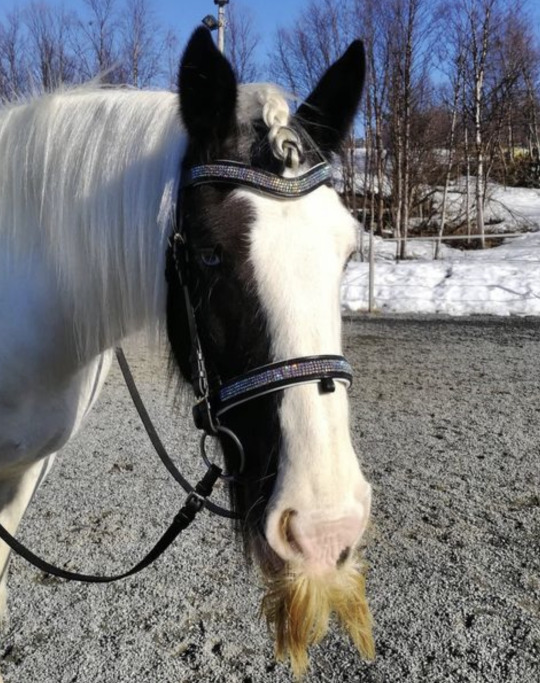

35 notes
·
View notes
Text
I want a brumby in SSO. I know we have Mustangs, but I want a brumby. That's all I ask.
Or maybe a different Aussie horse breed. I just want a horse breed in the game with some sort relation to Australia.
Please, I just want an Aussie horse on my adventures as an Aussie
#ssoblr#star stable online#sso#star stable#you can make the brumbies look like gen 3 versions of mustangs just with their breed name as brumby#i just want a brumby
10 notes
·
View notes
Text
Horse Breed Tournament
Round 2 Group 2

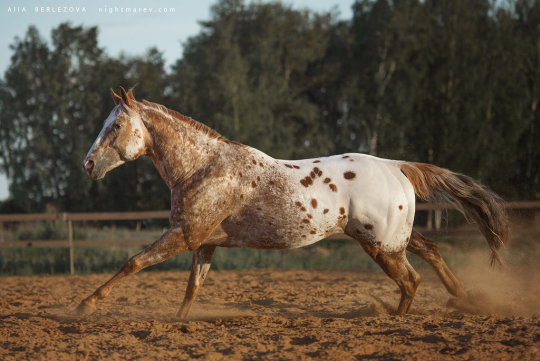
Brumby Image by hooltayka (Instagram) --- Appaloosa Image from all-the-horses (Tumblr)
6 notes
·
View notes
Text

@anonymous-astronaut here is the fan art of your boys!! Ahhh I am so happy with how they came out! Digital art is very new to me but omg I can’t believe how well they came together!! It’s not perfect but HELL I’m taking it! Stubborn as a mule Mick Mundy is a themed after a Brumby, an Australian feral horse! And sweet little Joseph is themed after the German Hanoverian horse!!! Yes even the colors were themed off specific horses of each (breed? I think???) I did try to add references off the art post you made for your boys, loosely, haha!
I hope you enjoy these adorable ponies, as a thank you for all the fantastic writing and art you give to us fans :3 (PS! Mick is sitting down and Joseph is standing up, so Mick TOWERS over poor Joseph, hence why he’s sitting so he can actually be level with his boyfriend, and he’s bending his front legs so be about the same height…. Big brumby stallion is like struggling to be eye level with his short boyfriend 🤣🤣🤣🤣🤣)
~Gremlin
#@anonymous-astronaut#Doves and Arrows fan art#mlp fim#tf2 sniper#tf2 medic#team fortress fanart#team fortress medic#team fortress 2#my little pony#tf2 ponies#mick mundy#bush medicine#fanart#tf2 au#anonymous astronauts boys :3#love your work#Doves and Arrows fic is SO GOOD ;3;
33 notes
·
View notes
Text
Someone should help them.
(Also, I had no idea what to do with suitcase’s design.)


(Btw, Suitcase is an Australian brumby. I think it’s the oldest horse breed in Australia)
#inanimate insanity#ii#inanimate insanity suitcase#ii suitcase#suitcase ii#suitcase inanimate insanity#my little pony#my litte pony friendship is magic#mlp#mlp art
1 note
·
View note
Text
I'm looking into adopting some brumbies soon because I'm one of the few people who have the desire to house a brumby, the skills to train them, and the moral standing to not exploit them. I had hoped that the brumby community would be a little pocket of, if not veganism, then non-exploitative horse loving in the broader equestrian world, but I've been increasingly frustrated by what I see.
Brumbies are invasive species in Australia, brought here by colonizers in the 1800s and used as tools to oppress the Indigenous peoples of our land. The general sentiment in the pro-brumbies communities is one that is worryingly racist and anti-science, as well as very right-wing. The rehoming group I'm in has spread conspiracy theories, with people even voting no on the recent referendum to try to save the brumbies - which is completely ridiculous and outrageously racist. The criticism seems to be leveled at the Labor government, who - while /far/ from perfect - aren't the issue. The libs would, of course, also shoot the brumbies, and more importantly, stand against animal rights. The problem with how the government treats brumbies is a symptom of the broader views of animals: as objects that can be removed with no regard to their individual rights whenever it becomes convenient.
This is where our view of animals as objects impacts our pet animals. While horses aren't strictly pets, and are almost universally exploited, dog and cat culling faces similar outrage. An example being the recent initiative to control cat numbers, where cats were sprayed with poison that would kill them when they groomed themselves. Feral cat, and to a lesser degree feral dogs, are slightly different to brumbies, in that their destruction of the environment and killing of our native animals are very well documented and extreme, whereas evidence of brumby destruction is more open to interpretation.
Personally, I do believe the evidence that brumbies cause destruction in the wetter areas of NSW and Victoria, for a number of reasons. However, I find it disgusting that we are slaughtering innocent animals in horrific ways rather than addressing the much more pressing issues of animal agriculture, deforestation, outdoor cats, pet breeding in general, and car-based infrastructure. My preference would be to address things that humans cause and benefit from first, in conjunction with rewilding to provide habitats for native animals, after which invasive animals are addressed in the least cruel way available, if they remain a problem.
I find it very disappointing that brumby groups do not condemn culling in general, but extend their protection and outrage only to brumbies - going as far as to advocate specifically for the culling of other species deemed less valuable, like pigs and goats. These animals are just as capable of suffering as brumbies, and are treated much worse than brumbies, with pigs being hunted in absolutely tortuous ways, and having no option of rescue like horses do.
They don't even seem to value the brumby's intrinsic value. The focus never seems to be on the animal's right to freedom, and the appreciation of an animal primarily viewed and valued by their exploitation thriving free - but rather their standing as an icon of colonizer heritage. I believe this is part of the reason why brumby advocates are so quick to throw other animals under the bus: those other animals didn't contribute so heavily to the success of colonization, and therefore didn't become part of the image of white Australia.
1 note
·
View note
Link
Affix: Marvel_93
Skills: 1130.18
Breed: Brumby
Age: 23 years 8 months
Species: Riding Horse
Height: 15.1 hands
Gender: male
Weight: 902 pounds
Coat: Roan
Date of Birth: 2017-07-03
Producer: Fallen-Wolf
0 notes
Photo


In my original au from a couple years ago, Cass and Adira are the only (relevant) centaurs, and centaurs overall aren’t a very common species. So naturally, upon meeting Cass, Adira wants to have Horse Conversations™. Cass, on the other hand, is less than thrilled about finally meeting someone who is bigger and stronger than she is and basically just wants to avoid her. This leads to some fun hijinks throughout season 2 lmao
#tangled the series#rapunzel's tangled adventure#tts#rta#cassandra#adira#centaur au#Adira is sorta based on the belgian horse#but honestly she doesn't really have a breed#she's just vibin#cass is loosely based on the brumby
61 notes
·
View notes
Photo


So. The Silver Stallion, or as our Australian friends prefer to call it, The Silver Brumby.
There are just two problems with the title.

You see this horse? This is the silver stallion - except he’s not silver ... and he’s played by a mare.
Oops.
- Kate
#The Silver Stallion#The Silver Brumby#I mean technically there are more problems with the title#like the fact that Blondie is a quarter horse and not a brumby#but expecting breed accuracy is probably setting the bar too high#casting a distinctly golden palomino as a silver horse though ...
465 notes
·
View notes
Note
WAITS ITS ASK BLU ANYTHING DAY UH WHATS UR FAVORITE HORSE BREED
Brumby first, Australian Stockhorse second. Wiluna was a brumby. They're not really a breed in the sense that mustangs aren't really a breed, but close enough. Brumbies are sure-footed with strong leg bones, have incredible endurance, and are insanely intelligent. All of this makes them excellent animals for stockwork, as nature can't carefully select bloodlines or make mistakes. Wiluna was a shining example of the capability of brumbies as stock horses.
I also like draught horses...
4 notes
·
View notes
Photo

Now is the turn of the Equidae Family. Not a huge fan of this family but I most say that it was very interesting to study them. Some of the members of this family are sadly extinct, while many others are on the brink of extinction. This animal has a beauty that is hard to express with words. I guess that is why appear in so many paintings through history.
Feral Horse: The feral horse is a free animal that was once domesticated. Somehow, escaped and become feral. The most famous ones might be the mustangs in North America. However the biggest population is found in Australia with more that 400.000 individuals. In Australia they are called Brumby. They can be found mostly everywhere and it’s name change depending on where is found and what type of breed used to be. Life always will find its way to survive.
I am moving to Instagram eventually: Species of the World
My store: Red Bubble store
#horse#wild horse#feral#equidade#mustang#artist on tumblr#drawing#spcies#clasificacion#classification#zoology#biodiversity#biology#conservation#scientific illustration#illo#illustrator#wild animals#Clement Van Burden#drawing animals
40 notes
·
View notes
Text
Horse Breed Tournament
Round 1 Group 2

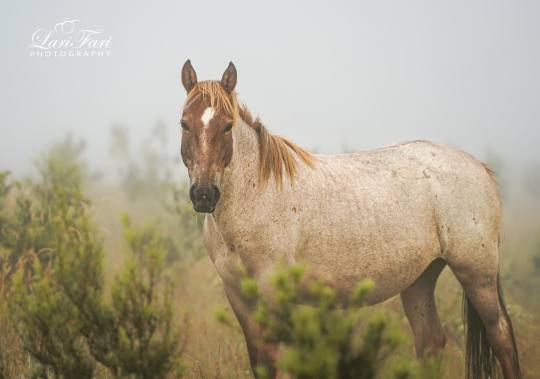
Danish Warmblood by lillegaarden (Instagram) --- Brumby Image by larifari_photography (Instagram)
6 notes
·
View notes
Photo

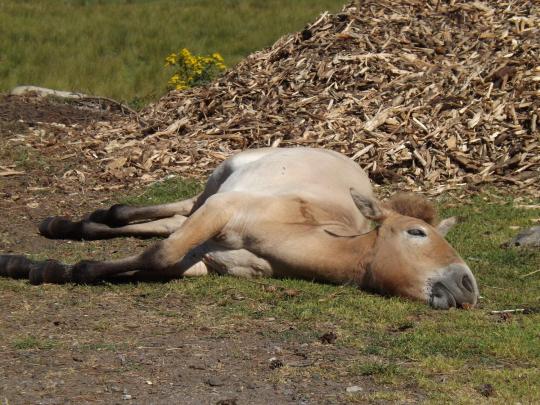





Slight delay in photo uploads this time; the wi-fi in the last hotel was pretty slow for loading anything more than text, and I just didn’t get around to it when I got home yesterday.
My last full day of my road trip was mostly spent at the Highland Wildlife Park near Aviemore. This has a big open reserve that you can drive around as many times as you like as well as several walk-around enclosures.
One of the species in the drive-around reserve is a breeding herd of Przewalski’s horses, the world’s last true wild horse (wild-living populations such as the mustangs of America and the brumbies of Australia being feral horses, descended from escaped or abandoned domestic ones). This animal was extinct in the wild for a while, but thanks to successful captive breeding programmes it has been reintroduced to its native home on the Central Asian steppes as well as some national parks and reserves elsewhere and it’s now classed as ‘endangered’, which still isn’t great but is definitely a big step up. There’s even a herd living in the Chernobyl Exclusion Zone.
Shortly after the last photo was taken, the horse on the left put its head in through my car window. I didn’t get a photo of this as I was busy staying extremely still.
2 notes
·
View notes
Link
Here are just a few of the stories about the horse colonies:
Mustangs

There's no feral horse quite as iconic as the mustangs of the American West.
These elegant creatures are descended from horses brought over to the Americas by the Spanish, but over the years, they have become mixed with a wide variety of other breeds, as well.
Mustangs are currently managed by the U.S. Bureau of Land Management, and as outlined by the Wild Free-Roaming Horse and Burro Act of 1971, these equines "are living symbols of the historic and pioneer spirit of the West, which continue to contribute to the diversity of life forms within the Nation and enrich the lives of the American people."
Brumby Horses

Brumbies are feral horses that roam free in Australia. Although bands of brumbies are found throughout the continent, the most well-known populations are found in the Northern Territory and Queensland.
Like many invasive species in Australia, brumbies are the descendents of escaped, released or lost animals that date back to the time of the first European settlements on the continent.
Due to the serious ecological threats they pose to native plants and wildlife, they are generally considered pests. But as with any population control methods for invasive species, the subject of brumby management is mired in controversy.
Namib Desert Horses

These exceedingly rare feral horses are found in the Namib Desert of Namibia, Africa. The story behind their introduction into this harsh terrain remains unclear, though there are some theories that their ancestors were former German cavalry horses brought to the area during World War I.
They currently roam the desert's Garub Plains, where they're allowed to remain as a tourist draw and historical oddity. To protect them, their grazing lands were incorporated into Namib-Naukluft Park in 1986.
12 notes
·
View notes